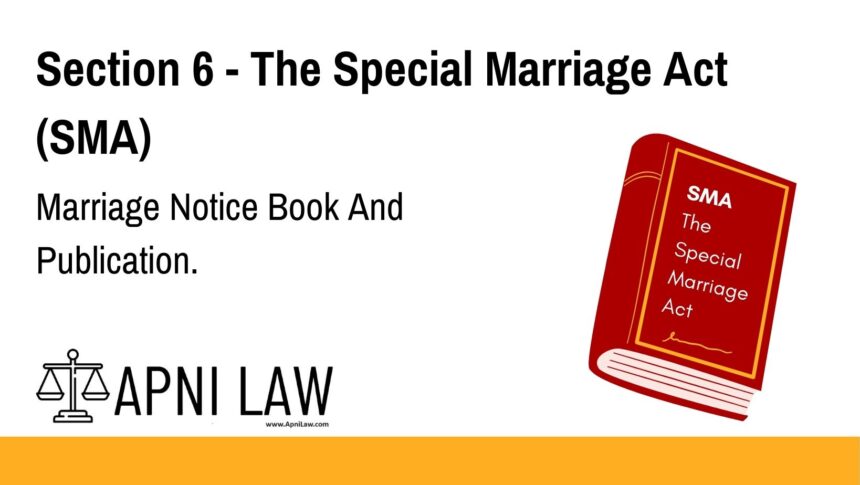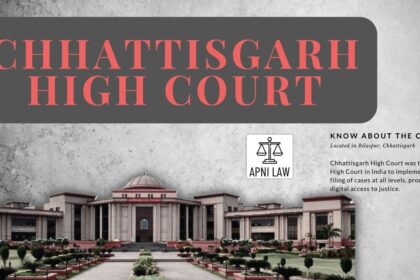Code: Section 6
(1) The Marriage Officer shall keep all notices given under section 5 with the records of his office and shall also forthwith enter a true copy of every such notice in a book prescribed for that purpose, to be called the Marriage Notice Book, and such book shall be open for inspection at all reasonable times, without fee, by any person desirous of inspecting the same.
(2) The Marriage Officer shall cause every such notice to be published by affixing a copy thereof to some conspicuous place in his office.
(3) Where either of the parties to an intended marriage is not permanently residing within the local limits of the district of the Marriage Officer to whom the notice has been given under section 5, the Marriage Officer shall also cause a copy of such notice to be transmitted to the Marriage Officer of the district within whose limits such party is permanently residing, and that Marriage Officer shall thereupon cause a copy thereof to be affixed to some conspicuous place in his office.
—
Explanation of Section 6 of the Special Marriage Act, 1954
Section 6 outlines the procedure that follows after giving a notice of intended marriage. It ensures that the notice is properly recorded and made visible to the public.
Key Points
Marriage Notice Book
The Marriage Officer must keep a true copy of each notice in a special register. This register is called the Marriage Notice Book. Anyone can inspect this book during office hours. There is no fee for inspection.
Public Display of Notice
Each notice must be placed where the public can see it. Usually, this is done by pinning a copy to the notice board at the Marriage Officer’s office.
Notices Across Districts
If one person lives in a different district, the notice must reach that district too. The Marriage Officer will send a copy to the Officer where the person resides. That Officer must also display it for public view.
These steps promote transparency. They also allow others to raise objections, if any, within the next 30 days.
—
Illustration
Example 1:
Ravi and Neha file a marriage notice in Mumbai. Neha lives in Delhi. The Marriage Officer in Mumbai places the notice in the Marriage Notice Book. He also sends a copy to the Officer in Delhi. Both officers display the notices in their offices.
Example 2:
Both Rahul and Sanya live in Bhopal. They submit their notice there. The Marriage Officer records it and displays the notice in the same office. No cross-district communication is needed.
—
Common Questions and Answers on Section 6 SMA
- What is the Marriage Notice Book?
It is a public register. It contains copies of all notices filed under Section 5. - Can anyone view the Marriage Notice Book?
Yes. Anyone may inspect it during working hours. No payment or special permission is needed. - Why is public display important?
It gives people a chance to raise legal objections. This protects against fraudulent or invalid marriages. - What happens when one person lives in another district?
The Marriage Officer must send the notice to the other district. The Officer there also displays it. - Is there a specific format for notices?
Yes. Section 5 mentions a standard form from the Second Schedule of the Act.
—
Conclusion
Section 6 plays a key role in making the marriage process fair and open. It ensures all notices are officially recorded and publicly displayed. This allows the public to raise concerns before the marriage is registered.
To read more about the Special Marriage Act or to access marriage notice formats, visit ApniLaw now.








